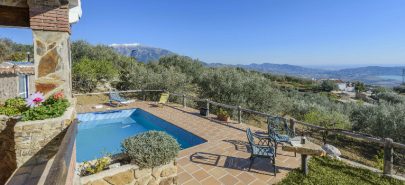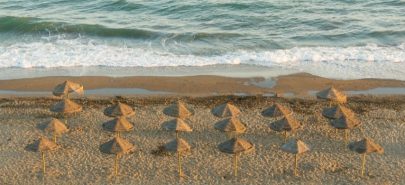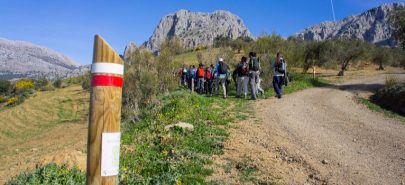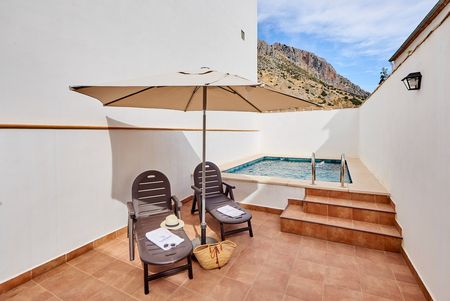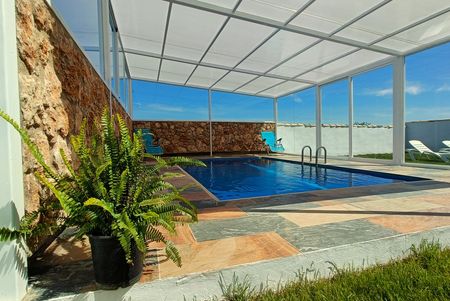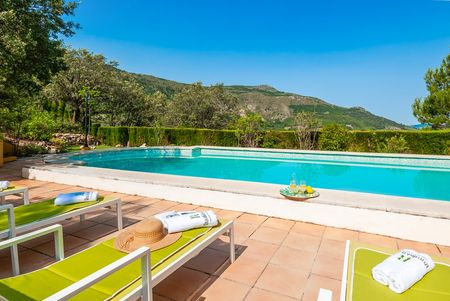Spain is a country steeped in history, and few places bring it to life as spectacularly as the province of Jaén. Here, lovers of the Middle Ages, architecture, and cultural heritage can marvel at the imposing fortresses that once defended these lands.
Jaen is one of the regions in Europe with the highest density of castles, and following the Route of the Castles of Jaen is the best way to discover this exceptional legacy. This landscape also witnessed two of the most pivotal battles in Spanish history: the Battle of Bailén in 1808, between Napoleon’s French Empire and the Kingdom of Spain, and the Battle of Las Navas de Tolosa in 1212, which marked a turning point in the Christian Reconquest of the Iberian Peninsula.
So don’t hesitate—immerse yourself in the Route of the Castles of Jaen: a thrilling journey that weaves together history, nature, and heritage. The ideal way to explore it is by starting in the north of the province and heading south, along routes that wind through the most expansive olive groves in Spain.
Map of the Route of the Castles of Jaen
To make sure you don’t miss any of these historic landmarks, here’s a map showing the location of all the castles featured along the Route of the Castles of Jaén. It will help you plan your itinerary with ease: calculate distances between villages, organise which fortresses to visit in a single day, and uncover unique corners tucked between olive groves and mountain ranges.
Next, we’ll guide you through each of these fortresses, one by one—highlighting what makes them special and worth the journey.
1. Museum of the Battle of Las Navas de Tolosa (Santa Elena)
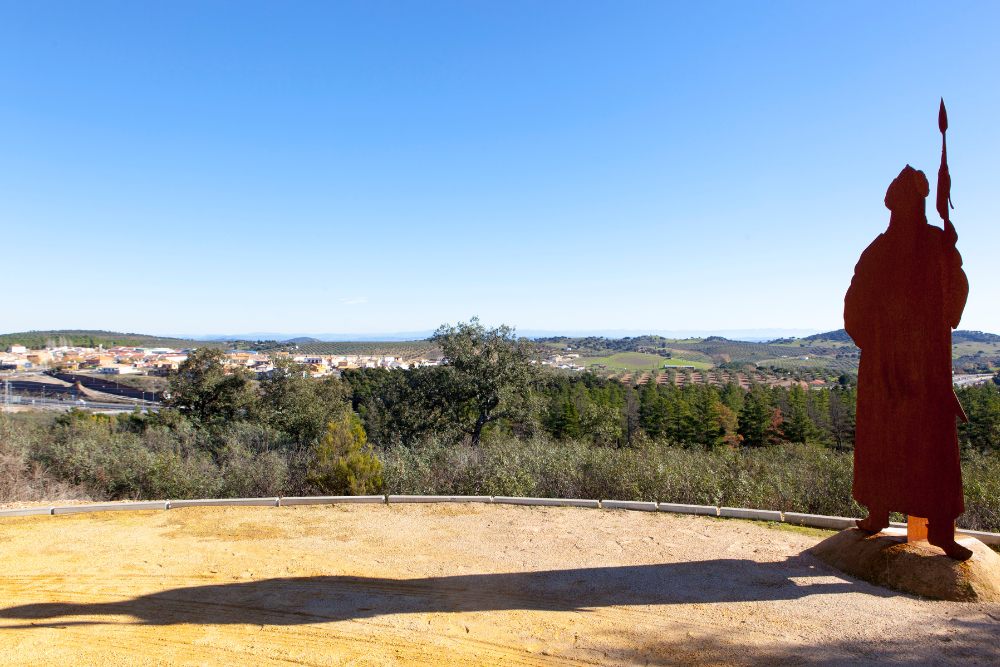
This museum lies in the Natural Park of Despeñaperros, where the 1212 battle of Las Navas de Tolosa took place between the Christian troops led by Alphonso VIII and the Moorish forces. The victory of the Christians started the decline of the Moorish kingdom in Spain.
The museum welcomes a permanent exhibition about the Battle, where you will discover how the battle happened, the camps, the weapons and much more thanks to modern installations.
To plan your visit, it’s worth knowing that the museum offers experiences tailored to different audiences, with options for half-day or full-day activities. In addition to the permanent exhibition, there are guided tours, educational workshops, and other events that delve deeper into the historical context of the battle. Full details, bookings, and direct contact information are available on the official Jaén Paraíso Interior website.
You will also have the chance to engage in a hike around the Natural Park of Despeñaperros.
2. Castle of Vilches (Vilches)
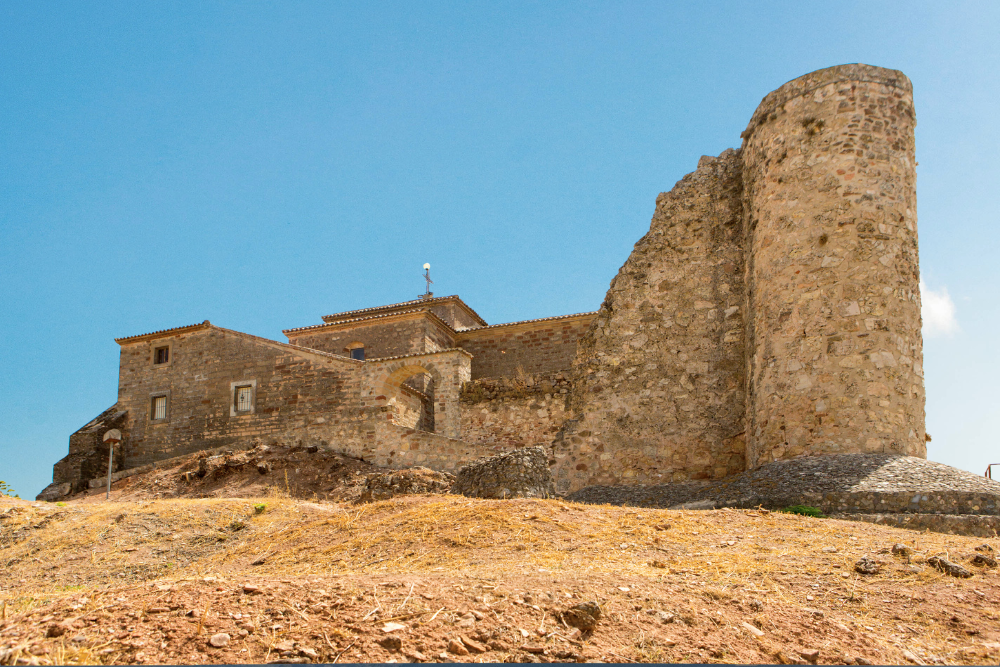
The castle of Vilches is located on a hilltop in the homonymous town; from its top, you can enjoy some tremendous views of the surrounding natural parks. Although it remains open throughout the day, if you’re interested in a guided tour, it’s advisable to get in touch in advance to check availability and conditions. You’ll find up-to-date contact details and opening times on the Jaén Paraíso Interior website, making it easy to plan your visit ahead of time.
3. Castle of Burgalimar (Baños de la Encina)
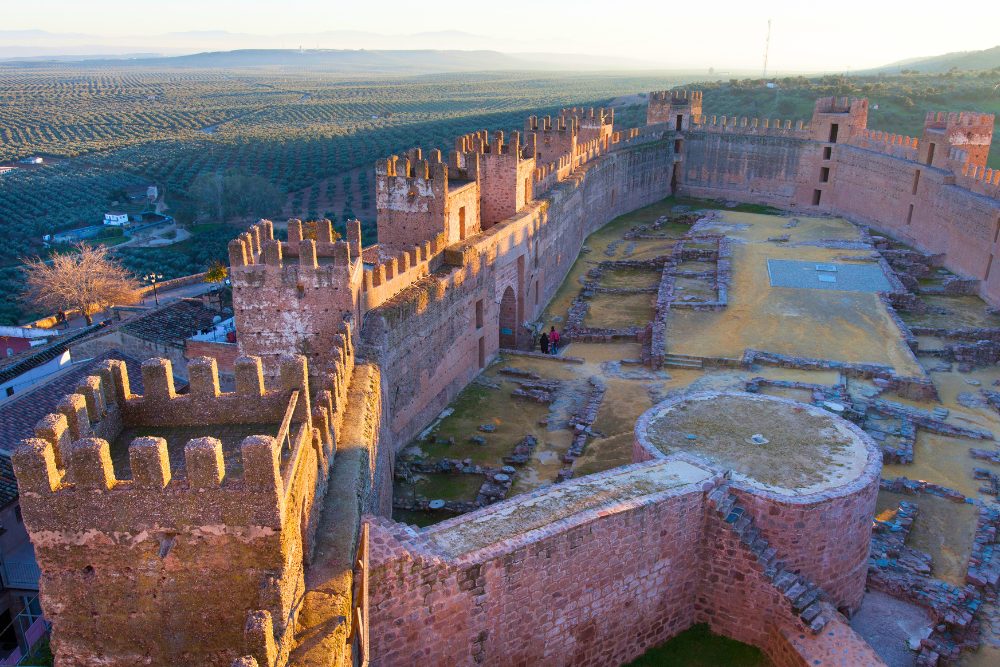
Located in Baños de la Encina, a town in the northern area of Andalucia, this castle is one of the most charming Moorish military fortresses in Spain, which dates back to the 10th century. One remarkable feature of the castle is that all the walls, which are still perfectly preserved, were built only with sun-dried mud bricks. Its construction was ordered by Caliph Al-Hakam II, son and successor of great Abderramán III.
The oval-shaped fortress is provided with 15, square-shaped towers. The closest to the town was altered by the Christians after the Reconquest, to convert it into the Homage Tower. The most noteworthy feature of this tower, however, is the horseshoe-shaped entrance door, one of the most recognisable symbols along the Route of the Castles of Jaen.
The visit to the castle lasts 45 minutes, and you will have to book in advance as you choose the day and hour of your visit. You can do so directly through the official tourism website of Baños de la Encina, where you’ll find updated information on prices and schedules, or by contacting them using the details provided there.
4. Museum of the Battle of Bailén (Bailén)
Moving towards the south and the city of Jaen, the town of Bailén is well worth a stop. The village is known for the 1808 Battle of Bailén between Napoleon’s French Empire and the Kingdom of Spain. The loss of Napoleon’s troops led to the withdrawal of Madrid by Napoleon’s brother, James Bonaparte I.
The Museum of the Battle of Bailén features a permanent exhibition displaying the antecedents and consequences of the battle, as well as the development of the battle itself. For up-to-date information on opening hours and ticket prices, including discounts and group rates, you can consult the museum’s official website.
5. Castle of El Trovador Macías (Arjonilla)
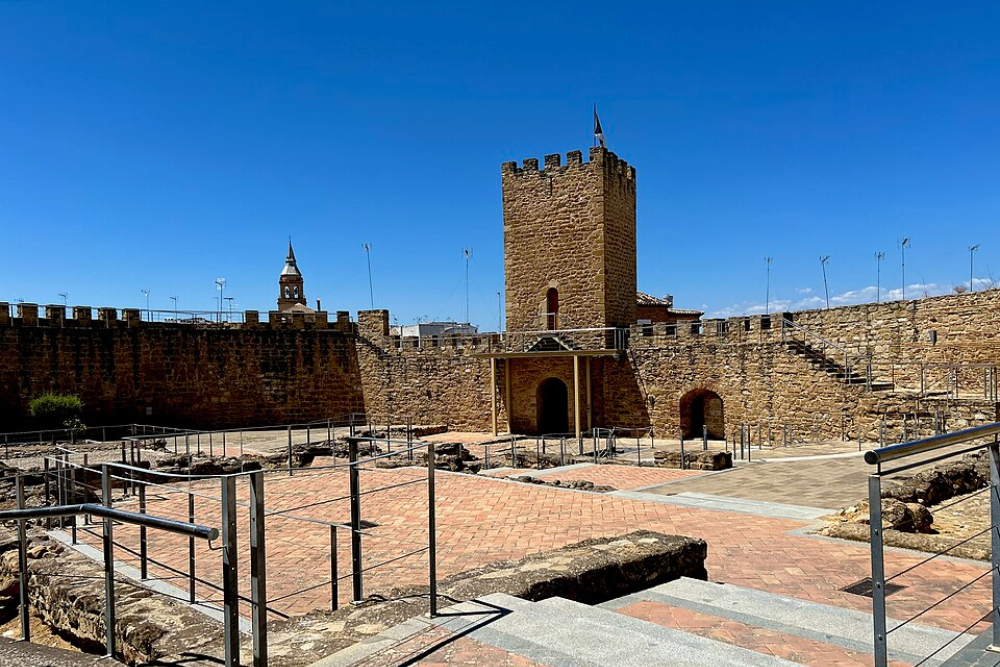
Located in the town of Arjonilla, this castle is related to the legend of the unfortunate love between the young troubadour Macías and Doña Elvira, which inspired two Spanish novels: Lope de Vega’s “Porfiar hasta morir” and Mariano José de Larra’s “El doncel de don Enrique el Doliente”.
The castle can be visited during the week, although if you’re planning to go at the weekend, it’s necessary to book in advance. You can check updated opening hours and find the relevant contact details to arrange your visit directly on the Jaén Paraíso Interior website.
6. Castle of Lopera
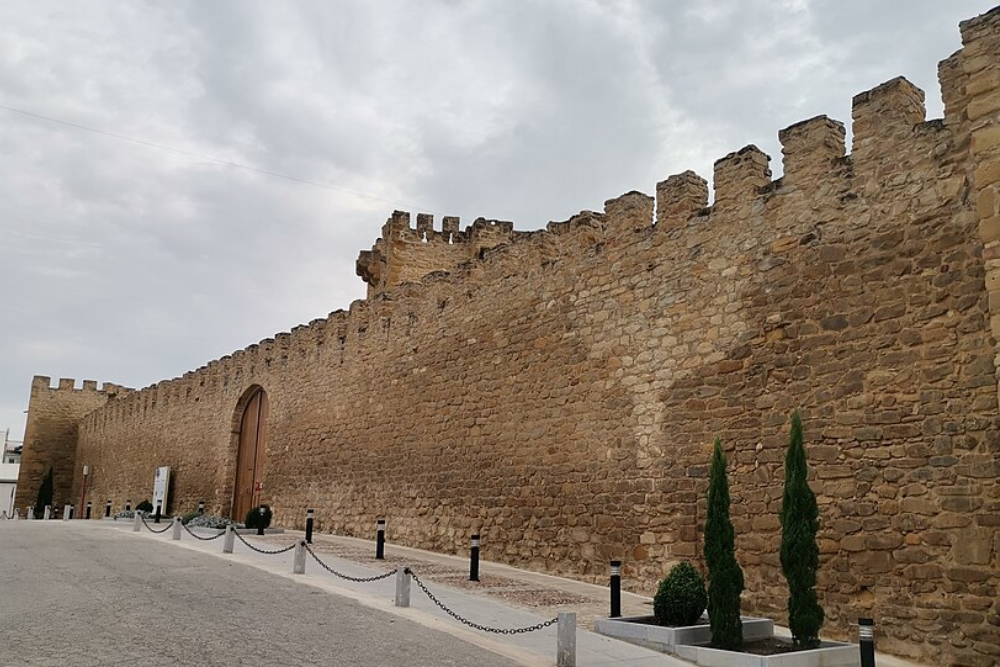
This is one of the most important castles of the Route of the Castles. The Order of Calatrava built it, a military order founded in the Kingdom of Castile. The castle still maintains the original walled-perimeter, and since its construction, it’s been used as a residence and even a winery.
Opening hours and booking information are available on the Jaén Paraíso Interior official website, where you can also find contact details and other useful information to help plan your visit.
7. Tower of Boabdil (Porcuna)
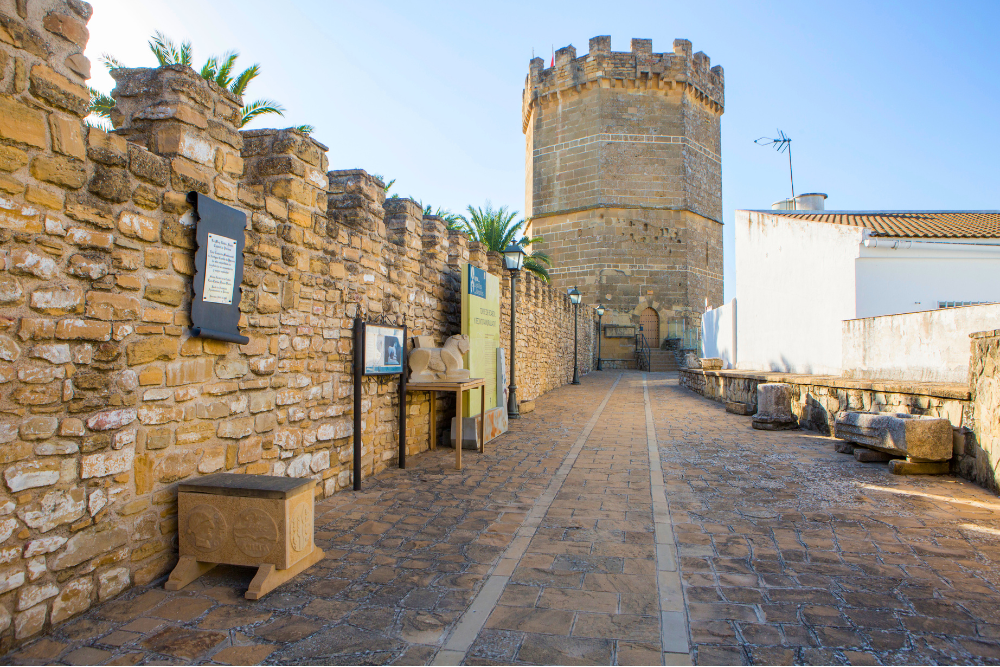
The tower and walls of Boabdil are located in the town of Porcuna, and they were built in the 15th century by the Order of Calatrava. Inside the tower, you can visit a museum displaying the richness of Porcuna and its history.
A legend related to this tower has it that the last king of Granada, Boabdil (to whom the tower owes its name) was held prisoner after the battle of Lucena, which saw the defeat of the Moorish troops led by Boabdil himself.
For details on opening hours and ticket prices, you can consult the page dedicated to the tower on the Castillos y Fortalezas de Jaén portal.
8. Castle of Torredonjimeno (Torredonjimeno)
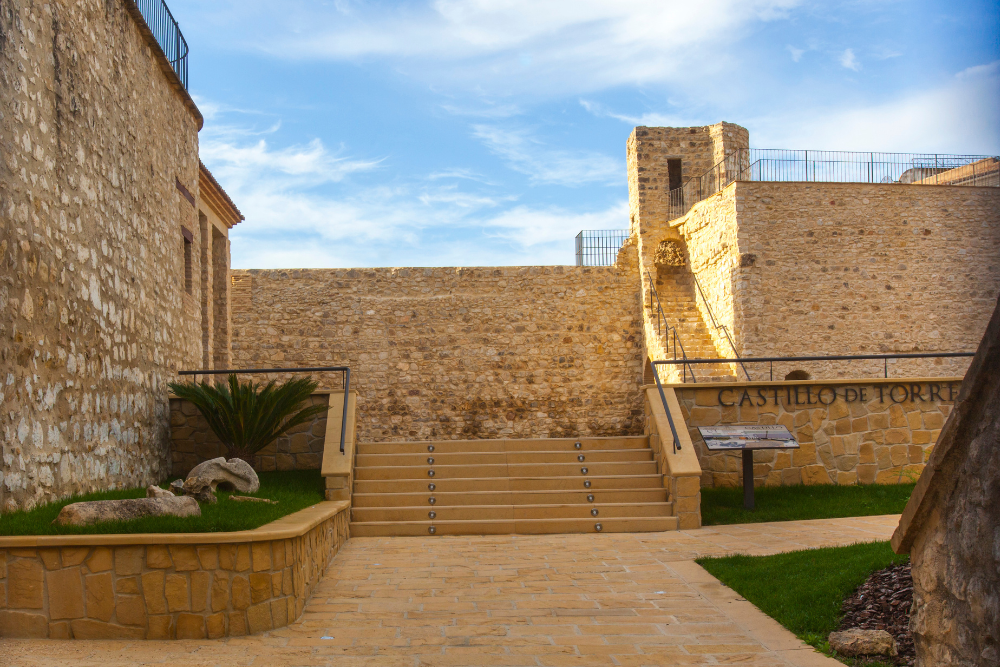
During its 800-year long life, this castle welcomed the writing of the first book about the art of bullfighting, and it was converted in the see of an olive-oil producer, as well as a residence of a noble family of the area in the 16th century.
The museum in the castle’s interior is about Spain’s second-biggest Visigoth treasure that was found near the town of Torredonjimeno in the 20th century.
Visits to the castle must be booked in advance and are managed through the contact details provided on the official Jaén Paraíso Interior website, where you’ll also find more information about this remarkable historical site.
9. Castle of Santa Catalina (Jaén)
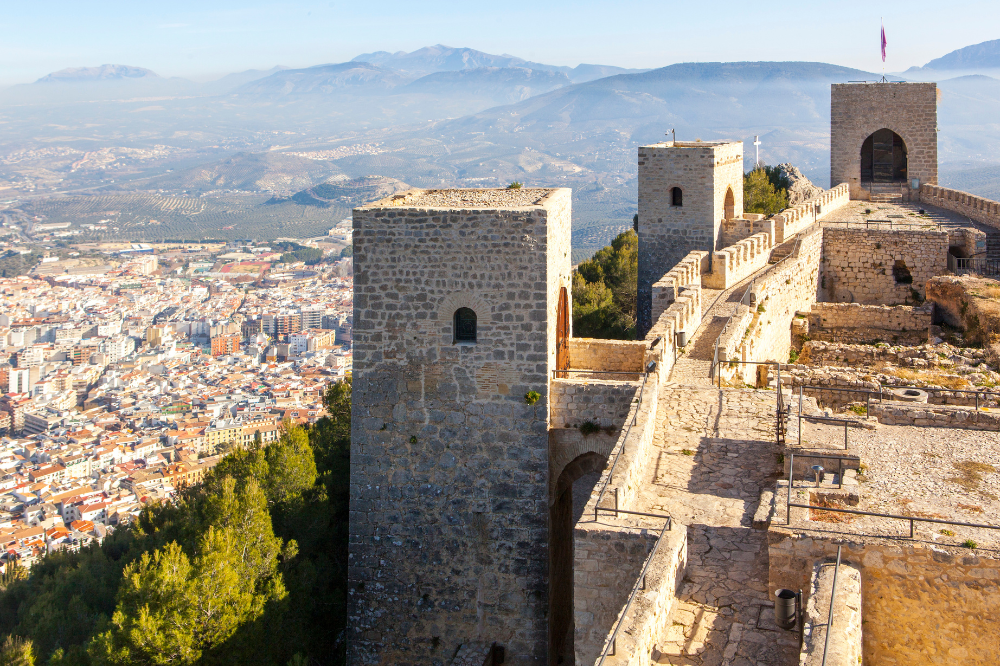
The Castle of Santa Catalina lies on a hilltop (El Cerro de Santa Catalina) in the city of Jaen, thus rejoicing in some staggering views of the city and the province that leave all the visitors overwhelmed.
This Medieval-Christian fortress lies in the Sierra de Jabalcuz, 820 metres above sea level. It’s actually a three-castle compound, and it was highly relevant during the Independence war.
To plan your visit, you can check opening hours and ticket prices on its official website, where you also have the option to purchase both individual and group tickets.
10. Castle of Alcaudete (Alcaudete)
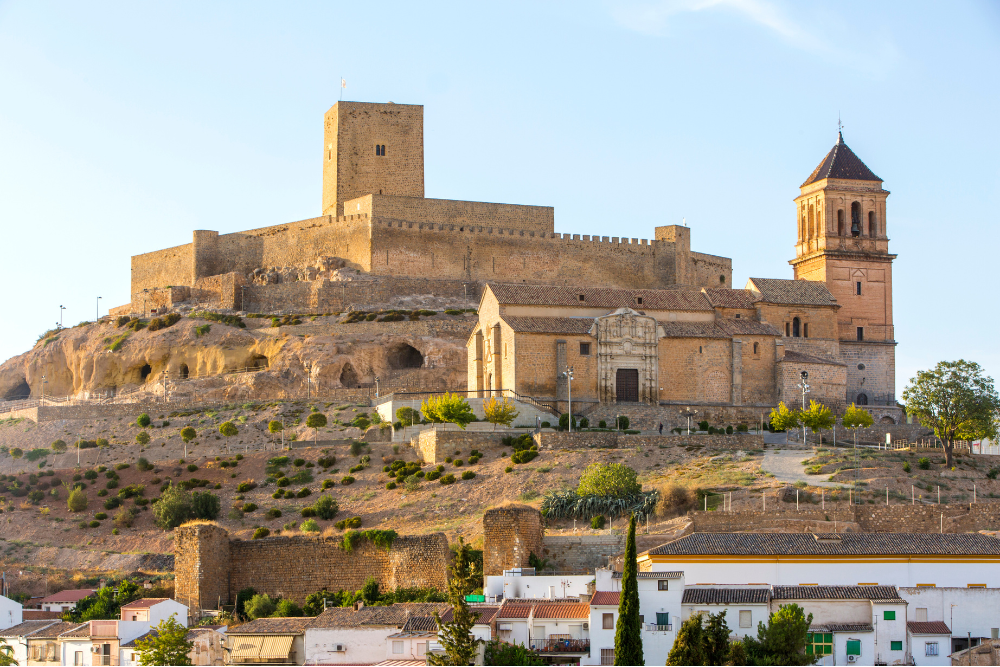
This castle is one of the best examples of the Order of Calatrava’s power in Spain. In fact, it was in the Castle of Alcaudete that King Ferdinand III charged the Order of Calatrava with protecting the West border of the Kingdom of Jaen.
The castle has been completely renewed, and it welcomes an exhibition hall where you will have the chance to learn the historical evolution and the period when the knight-monks of the Order of Calatrava lived in the castle.
Tickets can be reserved directly through the official website, both for guided tours and self-guided visits with an audio guide available in Spanish, English, or French. There, you can also check opening hours, prices, and all the details needed to plan your visit.
11. Fortress of La Mota (Alcalá La Real)
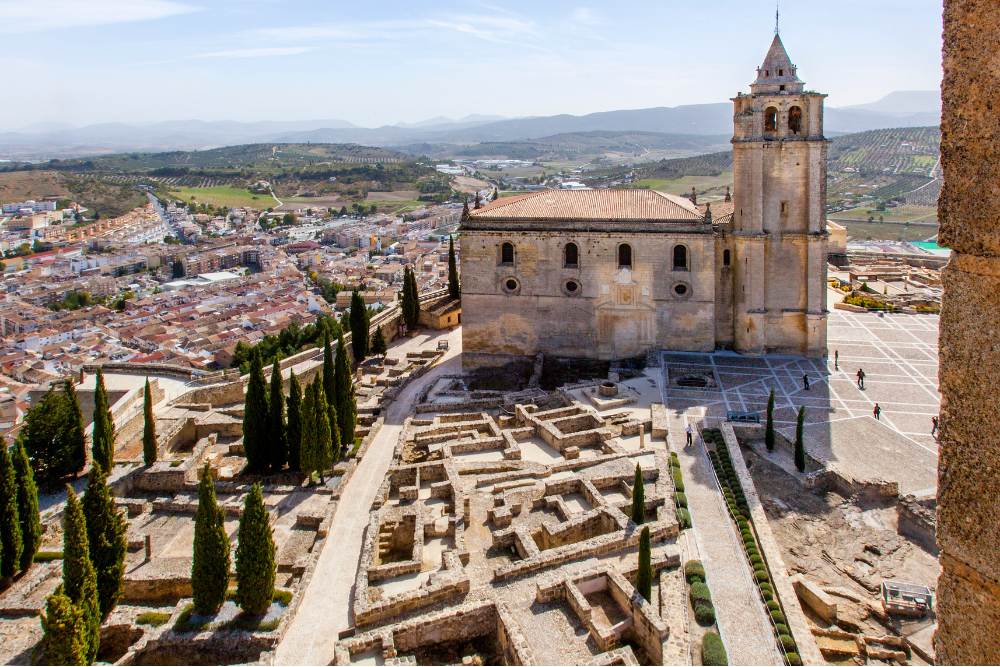
The fortress was erected on Roman and Visigoth archaeological remains in the 8th century by the Moors, at 1,033 mt above sea level. In the 13th century, during the Catholic Reconquest of Al-Ándalus, the castle was attacked by Alphonso VIII, Ferdinand III and Alphonso X. Alphonso XI was the only king that managed to conquer the castle, in 1341.
Until the 17th century, the fortress was the actual town of Alcalá La Real, which later expanded on the surrounding hills. Nowadays, the fortress’s church tower rises above the fortified walls and overlooks the whole town of Alcalá La Real, one of the most spectacular viewpoints along the Route of the Castles of Jaen.
You can purchase your tickets directly through the official website, where the different ticket types and their prices are detailed. The same page also includes an updated section on opening hours to help you plan your visit.
EXTRA:
Castle of Navas de Tolosa (Navas de Tolosa)
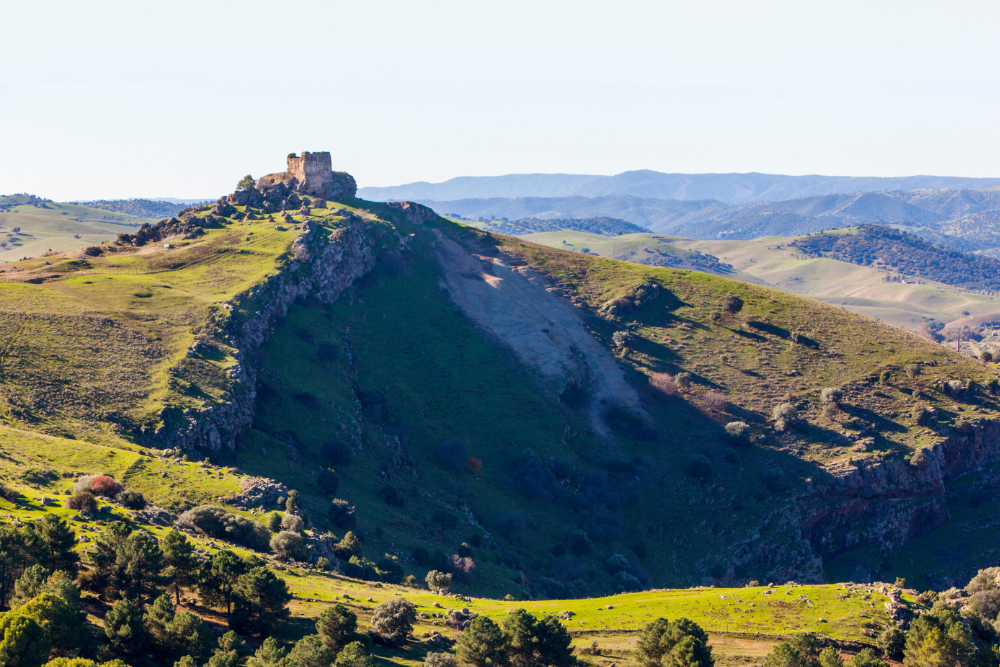
The castle of Navas de Tolosa is composed of the archaeological remains of the castle built during the Moorish Kingdom in the Iberian Peninsula, which was partially destroyed in 1473 when the border of the Kingdom of Spain with the Kingdom of Granada disappeared.
As the ruins are located on private property, visiting them requires prior contact with the site’s managers. Updated information and contact details are available on the Jaén Paraíso Interior portal.
Castle of Santa Eufemia (Cástulo, Linares)
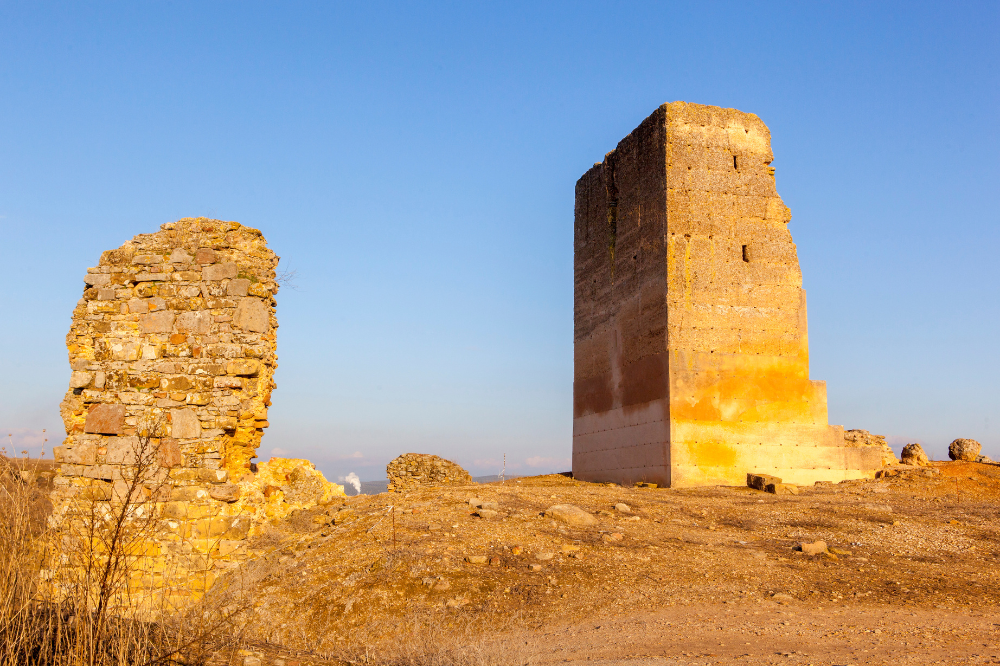
The ruins of this castle belong to what was once one of the most important Ibero-roman cities in the Peninsula. The castle was built between the 11th and 13th centuries, but at the end of the Middle Age, it was abandoned and its ruins used to build the spectacular nearby towns of Ubeda and Baeza.
To plan your visit and check access conditions, you can consult the updated information and contact details available on the Jaén Paraíso Interior website.
Castle of Canena (Canena)
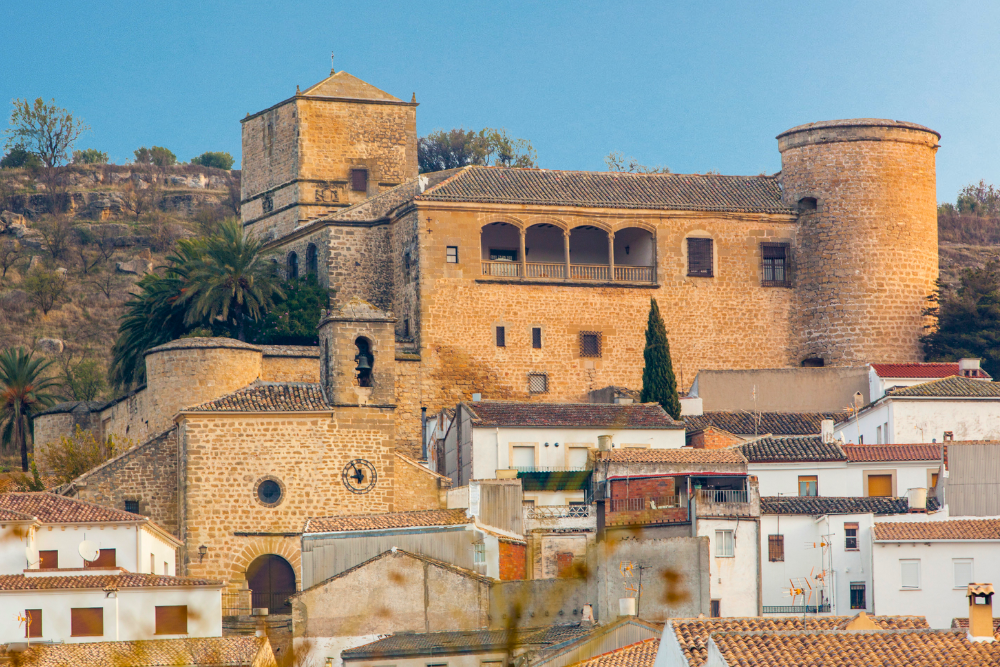
Near the renowned towns of Ubeda and Baeza, there lies the Castle of Canena, one of the best castles in Jaen province. Its original Moorish construction dates back to the 12th-13th century. It was conquered by the Order of Calatrava and then bought by Francisco de Cobos, Charles V’s secretary and a leading figure in the Renaissance-process that invested the province of Jaen in the 16th century.
De Cobos had architect Andrés de Vandelvira remodel the castle following the Italian Renaissance style. Therefore, the richness of this fortress resides in different architectonic styles coming together.
Its square-shaped floor is decorated with round-shaped towers in its corners. The castle is characterised by an indoor covered patio and gorgeous galleries.
Declared a National Monument in 1931, the castle now belongs to a private company dedicated to the production of extra virgin olive oil. In addition to its historical and architectural value, visits or guided tours can be arranged directly by contacting the company.
Castle of Sabiote (Sabiote)
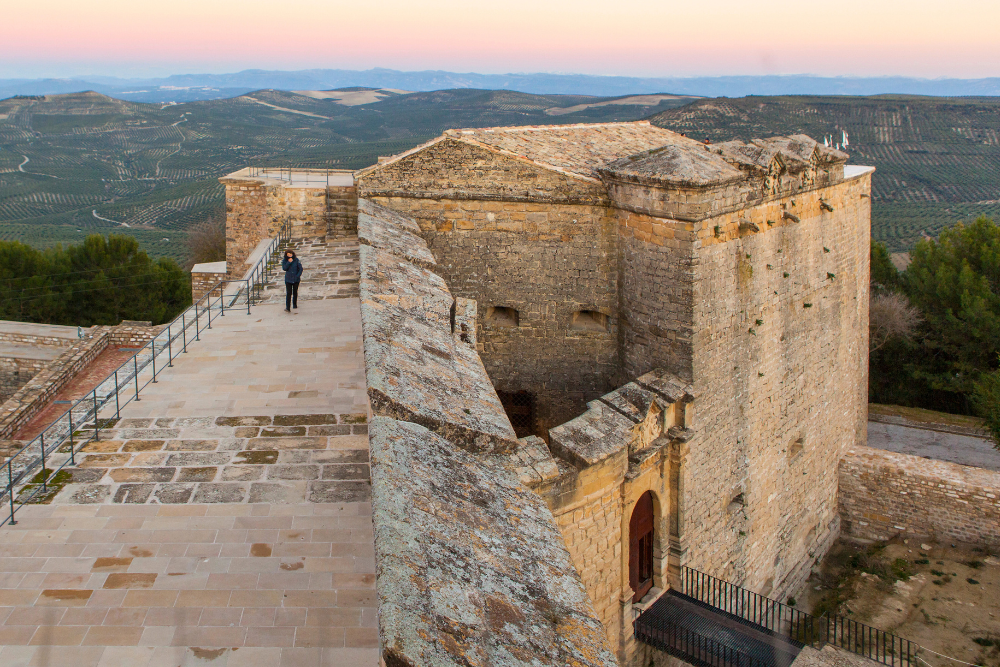
Very close to Ubeda and Baeza, the castle of Sabiote is the most important fortress of the region. It was built in the 16th century, and its structure follows the patrons of the Italian art. The stark outdoor walls were constructed to ensure complete resistance to the attacks and fire shots. On the contrary, its indoors welcome splendid details and extremely cared-for features, the most noteworthy of which is the double-gallery patio.
Access to the castle is only possible through guided tours, and tickets can be purchased directly via the official tourism website of Sabiote.
Fortress of La Iruela (La Iruela)
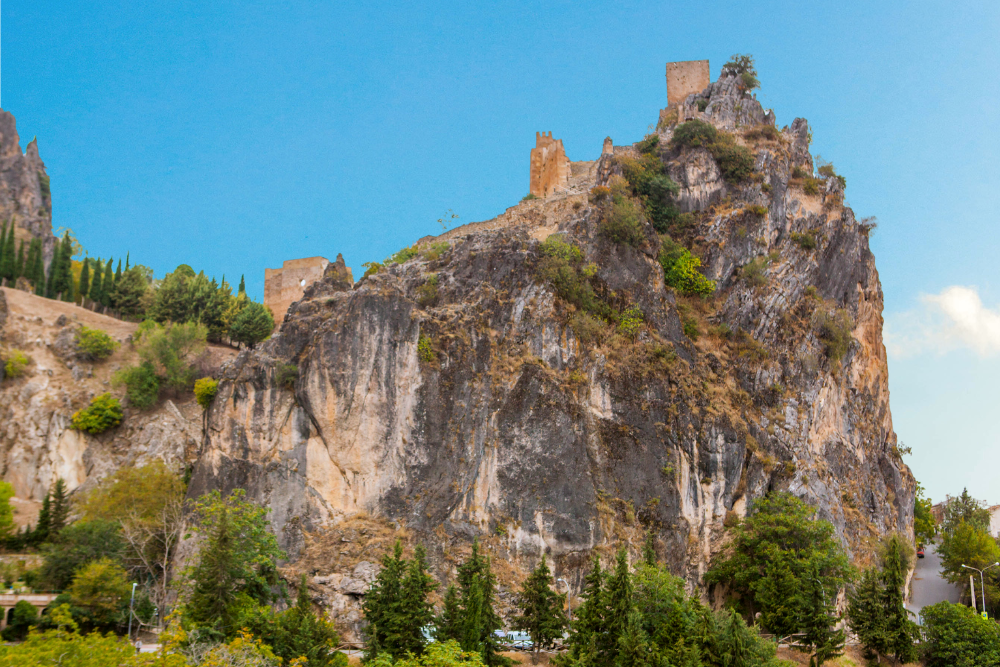
In the Sierra de Cazorla you will find this fortress on a hilltop, which was used as a military fortress until the 15th century, and then converted into a cemetery. Thanks to its architecture and beauty, this castle was declared Historic-Artistic Grouping in 1985.
Today, the fortress remains open to visitors and continues to be one of the most impressive landmarks in the area. Up-to-date information on opening hours and booking options is available on the Jaén Paraíso Interior portal.
The province of Jaen defined the history of Spain, mainly thanks to the battles between the Muslim and Christian kingdoms that took place here during the centuries. The Route of the Castles of Jaen is the fittest way to discover the history of Spain.
Places to stay in Jaen
As you enjoy the Route of the Castles of Jaen, you may want to relax in a lovely natural setting, among the olive yards and the smooth hills that characterise this Andalusian province. Therefore, take a look at some of the best holiday villas near Jaen by clicking on the button below.
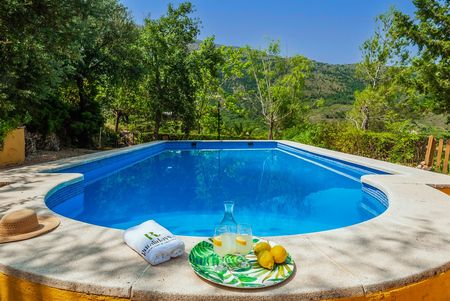
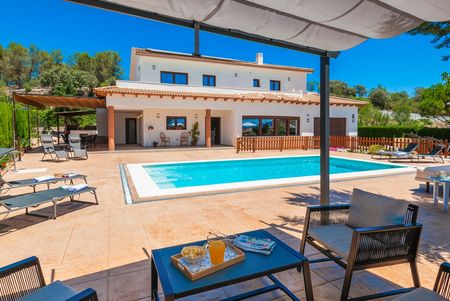
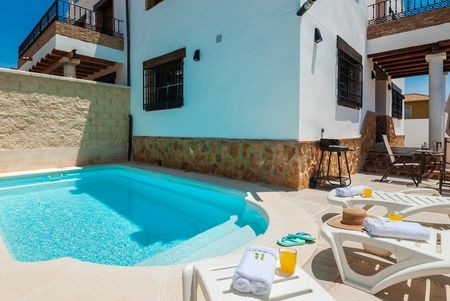
Don’t forget to check the opening hours of each castle, bring some water and snacks, and most important, your camera to capture all the splendid corners of the castles that are spread in Jaen province.

